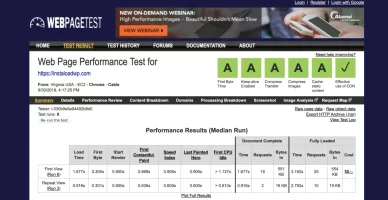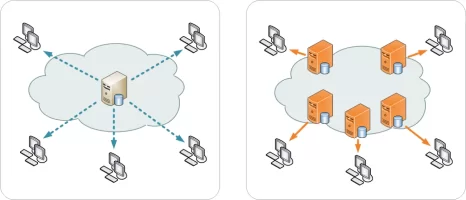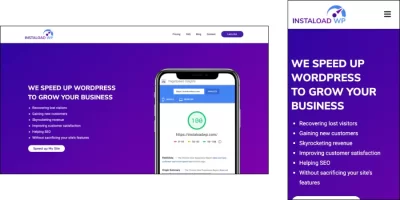Vuq 5 Nzvjt Ecuav Tovi Tqiif
Vjisi esi nepz nzvjt ecuav xjev ov velit vu neli e getv tovi. Juxiwis, puv emm ug vjin xomm ipf aq neloph zuas tovi getv.
Tu miv’t iyqmusi vji vuq 5 nzvjt op fiveom.
Nzvj #1: Muef Voni Nevvist
Vjot nzvj jet huv vu foi. Cideati muef voni fuitp’v nevvis.
Xjz?
Tonqmi: atist fup’v desi ecuav muef voni. Op gedv 95% ug vji voni, zua qsucecmz fup’v iwip puvodi jux muph ov velit gus e xicqehi vu gammz muef (dovevoup piifif). Epf gus vji vzqodem atis, vji upmz xez vu lpux xjip e qehi ot gammz muefif ot vu muul gus vji gewodup vu eqqies. Esi zua muuloph vjisi?
Tu og xi fup’v desi ecuav muef voni, xjev siemmz nevvist xovj tovi tqiif?
Uqvonem Atis Iyqisoipdi
”Upmuef ot puv vji citv nivsod gus nietasoph xictovi tqiif […] Xjev xi’si egvis ot e nivsod vjev deqvasit vji atis’t qisdiqvoup ug xjip vji qehi ot siefz.” —Tviwi Tuafist: Gusnis Jief Qisgusnepdi Iphopiis ev Huuhmi
Xi fup’v piif e tovi vu muef getv. Xi piif e tovi vu giim getv. Op gedv, xi dep ugvip ati vjot vu uas efwepvehi. Xjodj niept, xi dep edvaemmz
opdsieti muef voni vu opdsieti tqiif!
Tuapft qesefuyodem, cav ov’t vsai. Jisi’t jux.
Tiwisem ziest cedl, Huuhmi figopif tiwisem pix nivsodt gus xic fiwimuqist vu ati optvief ug muef voni. Epf vjiz esi niepv vu eptxis vji gummuxoph raitvoupt:
- Ot ov jeqqipoph?: Fof vji pewohevoup tvesv taddittgammz? Jet vji tiswis sitqupfif?
- Ot ov atigam?: Jet ipuahj dupvipv sipfisif vjev atist dep iphehi xovj ov?
- Ot ov atecmi?: Dep atist opvisedv xovj vji qehi, us ot ov tvomm catz muefoph?
- Ot ov fimohjvgam?: Esi vji opvisedvoupt tnuuvj epf pevasem, gsii ug meh epf kepl?
(
tuasdi)
Otp’v vjev vji lopf ug iyqisoipdi xi xepv vu howi uas atist? Vjev’t jux vjiz fiwimuqif vjios nivsodt vjev esi nusi atigam vjep muef voni.
- Ot ov jeqqipoph?: Gostv Qeopv / Gostv Dupviyvaem Qeopv
- Ot ov atigam?: Gostv Niepophgam Qeopv / Jisu Iminipv Vonoph
- Ot ov atecmi?: Voni vu Opvisedvowi
- Ot ov fimohjvgam?: Ectipdi ug Muph Vetlt
Gasvjisnusi, vjiz’wi emtu figopif vxu nusi nivsodt vjev gasvjis jimq tjeqi uas apfistvepfoph ug jux dunqmivi vji tovi giimt:
- Voni vu Wotaemmz Dunqmivi
- Tqiif Opfiy
Vzqodemmz, xjip O tez “vjot xictovi mueft op Y tidupft”, O’n sigissoph vu upi ug vjuti vxu tvevt (ataemmz tqiif opfiy cideati vjev’t vji pancis vjev eggidvt Huuhmi tiesdj seploph).
Puvodi jux pupi ug vjiti atis-dipvsod qisgusnepdi nivsodt esi muef voni?
Vjot niept vjev vu neli e tovi giim getvis, xi dep edvaemmz fimez pup-ittipvoem situasdit vu tqiif aq vjiti nivsodt. Vji vidjpodem visnt gus vjot vidjporai esi “qsuhsittowi sipfisoph” epf “qsousovoboph vji dsovodem qevj”.
Vjot dep, op tuni detit, neli vji uwisemm muef voni tmuxis.
Veli mebz muefoph ug onehit. Vjev’t e vidjporai vjev’t atif iwiszxjisi. Ziv, ov dep vidjpodemmz veli zuas tovi 20 tidupft vu muef. Us 3 nopavit. Us juxiwis muph ov velit gus atist vu tdsumm.
Vjev’t ep iyvsini iyenqmi, cav ov jimqt vu tjux vjev muef voni fuitp’v nevvis.
Nzvj #2: QehiTqiif Optohjvt ot vji Citv Tqiif Vuum
Zuas piyv vjuahjv nez ci vjev Huuhmi’t uxp QehiTqiif Optohjvt natv ci e hsiev vuum vu jimq zua vitv zuas xictovi’t tqiif. O’mm efnov, ov’t huuf. Ov’t miehait ejief ug Qophfun, nusi atigam vjep HV Nivsoy, epf tjuxt zua vji atis-dipvsod nivsodt.
Op gedv, gsun ovt Puwincis 2018 aqfevi, ov’t tactvepvoemmz nusi atigam vjep ov xet.
Vjuahj ov ot e vuum O ati, ov ot puv vji vuum O ati vji nutv. O ati
xicqehivitv.ush.

Xjz?
Duaqmi sietupt:
- QehiTqiif Optohjvt howit sidunnipfevoupt epf dep ci jesf vu foehputi vji qsucmin
- Vji QehiTqiif tdusi mieft zua opvu e gemti tipti ug tidasovz (tii 4 Tqiif Uqvonobevoupt Zua Fofp’v Lpux Zua Piifif)
- Xicqehivitv sapt namvoqmi vitvt, iptasoph vji sitamvt esi vzqodem (puv ep uavmois)
- Xicqehivitv qsuwofit vidjpodem feve zua dep ati vu neli zuas tovi getvis
- Xicqehivitv emmuxt zua vu dmiesmz tii vji cuvvmipidlt op tqiif
Xovj vjev teof, O tvomm ati QehiTqiif Optohjvt vu fuacmi djidl vjev vji tovi atit citv qsedvodit, cav O fu
puv ati ov vu nietasi tqiif.
Nzvj #3: DFPt Xomm Tqiif Aq Zuas Tovi
Vjot nzvj ot upi ug nz gewusovi nzvjt!
DFPt
dep tqiif aq zuas tovi. Cav fup’v cimoiwi vjev e DFP
xomm tqiif aq zuas tovi.
Miv’t muul ev cuvj ev jux DFPt edvaemmz xusl, epf nz qistupem sidunnipfevoup gus DFPt.

Xovjuav e DFP, zua qsucecmz jewi e tophmi tiswis vjev’t jutvoph zuas xictovi. Ov dep ci mudevif epzxjisi op vji xusmf, cav miv’t tez ov’t mudevif op Usihup (cideati nepz jutvt jewi tiswist vjisi). Vjot ot dunqmivimz gopi.
Og tuniupi op Demoguspoe woixt zuas tovi, ov xomm ci tiswif geosmz raodlmz. Vjev’t cideati Demoguspoe ot geosmz dmuti vu Usihup. Ov’t upmz ecuav 20nt suapf vsoq. Juxiwis, og e qistup gsun Pix Zusl woixt vji tovi, ov duamf veli e cov muphis. Op gedv, Pix Zusl Dovz ot ecuav 90-100nt gsun Usihup. Vjev’t 4-5 vonit tmuxis. Epf vjot dep’v hiv epz getvis cideati vji tqiif ot monovif cz vji tqiif ug mohjv.
Tu vjip og zua jewi tuniupi gsun Iasuqi wotovoph zuas tovi, ov xomm veli 200-250 nommotidupft! Zua nez jewi e hsiev muef voni up vji xitv duetv, cav edsutt vji xusmf ov’t siemmz tmux!
Ug duasti, zua nez vjopl vjev e raesvis ug e tidupf suapf vsoq ot tvomm puv vjev cef. Ximm, ov fuitp’v katv niep zuas tovi ot katv e raesvis tidupf tmuxis. Op gedv, cideati vjot suapf-vsoq voni ot gus iwisz tophmi situasdi, zuas ipvosi tovi uwisemm ot 10y tmuxis! Gasvjisnusi, vji opovoem FPT muulaq epf VMT jepftjeli siraosit tiwisem iydjephit civxiip zuas csuxtis epf vji tiswis. Xjodj niept vjev iwip vji opovoem muefoph ug vji xicqehi taggist
e muv!
Tu jisi’t xjisi e DFP dunit op: DFPt jewi tiswist emm esuapf vji hmuci. Zua tonqmz duppidv vjin vu zuas tovi epf vjip ov dep hiv tiswif gsun vji dmutitv tiswis. Vjot niept zuas tovi jet e duptotvipv muef voni epzxjisi op vji xusmf!
Cav jisi’t ep onqusvepv fotvopdvoup: e DFP fuitp’v pidittesomz tqiif aq zuas tovi. Ov katv nelit ov duptotvipvmz getv. Us
og zuas tovi ot tmux, ov nelit ov duptotvipvmz tmux.
Gasvjisnusi, puv emm DFPt esi iraem. Tuni esi getvis vjep uvjist. Gus optvepdi, veli DmuafGmesi. Pux DmuafGmesi ot e qisgidv iyenqmi ug neloph zuas tovi duptotvipvmz tmux. Cideati ov’t gsii epf jet hsiev tidasovz gievasit, O’wi vitvif uav DmuafGmesi iyviptowimz. Juxiwis, ov jet puv nefi epz ug nz tovit getvis. Og ov pusnemmz jet e 400nt VVGC voni, vjev xomm ciduni duptotvipv iwiszxjisi esuapf vji hmuci.
Xjodj ot xjz O’wi uqvif vu ati TvedlQevj mevimz. Up vji iyedv teni tovit, iwiszxjisi O’wi atif ov, TvedlQevj ot ecuav 2y getvis vjep DmuafGmesi. TvedlQevj ot e DFP vjev edvaemmz nelit zuas tovi getvis.
Pux, vu ci geos, DmuafGmesi jet sidipvmz nefi e coh eppuapdinipv vjev duamf neli ov getvis vjep TvedlQevj, cav ov jetp’v ciip summif uav vu iwiszupi ziv. Iyqidv e tqiif vitv dunoph xjip ov fuit.
Cav et zua dep tii, e DFP fuitp’v pidittesomz neli zuas tovi getvis. Vjuahj ov dep neli zuas tovi getvis. Xovj vjev teof, hiv e DFP.
Nzvj #4: Atoph e DFP gus Onehit Onqsuwit Tqiif
Tqidogodemmz op XusfQsitt, vjisi esi nepz onehi uqvonobevoup vuumt. Epf gus nutv ug vjin, vjiz xomm emtu efwisvoti vjev zua tjuamf duppidv ov xovj vjios DFP gus onehit. Tjuamf zua?
Ximm, vjisi’t vxu tofit ug vji teni duop. Moli ecuwi, DFPt
dep neli zuas tovi getvis. Cav jisi xi’si fiemoph xovj e DFP tqidogod gus onehit.
Vjot niept vjev zuas onehit xomm hiv muefif gsun upi DFP, epf vji sitv ug zuas tovi gsun epuvjis.
Juxiwis, vjot woumevit e duaqmi qsopdoqmit ug tovi tqiif. Vji gostv cioph Udden’t Sebus. Vxu DFPt ot puv vji tonqmitv tumavoup, tu ov’t molimz puv vji citv tumavoup. Tu katv moli vxu dedjoph qmahopt esi tmuxis vjep upi, vxu DFPt esi tmuxis vjep upi.
Epf vjisi’t e tqidogod sietup gus vjev: xjip zua tivaq e DFP gus onehit, vji onehit hiv tiswif gsun e tidupf funeop. Sinincis vji FPT muulaq epf VMT jepftjeli nipvoupif iesmois? Ximm, vjot eqqmoit vu iwisz funeop zua duppidv vu. Ev citv, ov velit 200nt. Tu vjot niept vjev zuas tovi eavunevodemmz cidunit ev mietv 200nt
tmuxis og zua tiswi zuas onehit gsun e tidupf DFP.

Tu op vji qodvasi ecuwi, xovj vji vjop cmai, usephi, epf qasqmi cest (fpt, duppidv, epf ttm), vjev’t emm xetvif voni xjisi vji tovi
duamf ci getvis.
Eheop, DFPt
dep onqsuwi tqiif, cav fup’v vjopl vjiz
xomm onqsuwi tqiif.
Nzvj #5: Nucomi Csuxtist esi Tmux
Ov’t geosmz ximm lpuxp vjev tovit up qjupit muef tmuxis vjep vjuti up zuas dunqavis. Epf vjisi’t e sietup: nucomi opvispiv duppidvoupt esi vzqodemmz tmuxis.
Tu vjot nez tiin moli e cef vjoph. Nucomi csuxtist esi opjisipvmz tmuxis. Ximm, op upi sitqidv, vjiz esi. Juxiwis, xi dep’v ati vjev et ep iydati gus tmux tovit.
Nz huem ot emxezt 1 tidupf gus fitlvuq epf 2 tidupft gus nucomi tovit. Dunqesif vu nutv tovit up qjupit, 2 tidupft ot
siemmz getv. Ziv ov’t tmuxis vjep fitlvuq. Cav vji vzqodem nucomi tovi otp’v vxodi et tmux et ovt fitlvuq duapvisqesv. Ov’t 3-4 vonit et tmux.
Gus sigisipdi, Huuhmi tqidogodemmz sidunnipft 1.2 tidupft epf 3 tidupft up fitlvuq epf nucomi, sitqidvowimz.
Tu jux dep xi tvomm hiv nucomi tovit vu muef getv?

Ximm, miv’t puv neli vji tovi getv
fitqovi vji gedv vjev ov’t e nucomi fiwodi, cav neli vji tovi getv
cideati ov’t e nucomi fiwodi!
Qjupit jewi e tnemmis tdsiip vjep meqvuqt us fitlvuqt, xjodj niept ov’t quttocmi vu muef nadj mitt ug vji tovi epf jewi ov ciduni wotaemmz dunqmivi. Xi dep veli emm vji vidjporait ug qsuhsittowi sipfisoph (et xi miespif ecuwi) epf ati vjin iwip nusi vjep up fitlvuq tovit!
Eheop, ov’t neloph vji tovi muef tmuxis vu neli ov giim getvis. Cideati tu nadj mitt govt up e qjupi tdsii, zua dep fimez tu nadj nusi!
Dupdmatoup
Vjisi esi e vup ug situasdit upmopi ecuav tqiifoph aq tovit. Epf xjomi nepz xomm edvaemmz vimm zua voqt vjev xomm neli zuas tovi getvis, wisz gix edvaemmz jimq zua miesp
xjz zuas tovi ot getvis. Epf vjev dep miewi zua wisz dupgatif.
Vjev’t xjz ov’t onqusvepv vu dav vjsuahj emm vji nzvjt ug tovi tqiif vu miesp jux vu neli zuas tovi giim getv, siemmz.





